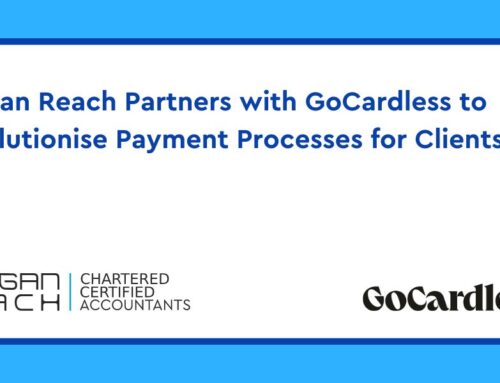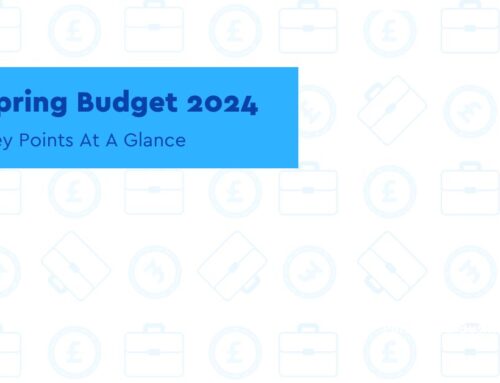Introduction
The Chancellor, Jeremy Hunt, has delivered another UK Budget, in the midst of a significant cost of living crises and the war in the Ukraine seeing no signs of reaching a conclusion.
Here are some of the main outcomes which have come about as a result of this Budget.
Income Tax Allowance, National Insurance & Rate Bands
It is important to note that the tax rates and thresholds are complicated by the fact that the power to vary the tax rates and thresholds of Non-Savings, Non-Dividend income for Scottish taxpayers has been devolved to the Scottish Parliament since April 2017. With the exception of the tax thresholds, similar powers have been passed over to the National Assembly of Wales since April 2019 in respect of Welsh resident taxpayers. The Income Tax Personal Allowance and all other elements of the Income Tax system remain part of the Chancellor’s responsibility.
As was previously announced in the 2022 Autumn Statement, the Personal Tax Allowance currently set at £12,570, will remain at this level until 2028. The Basic Rate Tax Band, presently set at £37,700 will also stay the same until April 2028. Personal allowances will be reduced by £1 for every £2 a person’s income exceeds £100,000.
UK Tax Rates 2023/24 (except Scotland)
| Band | Rate |
| £0 to £12,570 | 0% |
| £12,571 to £37,700 | 20% |
| £37,701 to £125,140 | 40% |
| Over £125,140 | 45% |
Scottish tax rates 2023/24 re non-savings, non-dividend income
| Bands | Band Name | Rate |
| £0 to £12,570 | Personal allowance | 0% |
| £12,571 to £14,732 | Starter rate | 19% |
| £14,733 to ££25,688 | Scottish basic rate | 20% |
| £25,689 to £43,662 | Intermediate rate | 21% |
| £43,663 to £125,140 | Higher rate | 42% |
| Over £125,140 | Top rate | 47% |
The national insurance rates for 2023/24 remain unchanged from that set in the 2022 Autumn Statement.
| National insurance (NI) | 2023/24 |
| Class 1 NI employees – earnings between £12,570 – £50,270 | 12% |
| Class 1 NI employees – earnings in excess of £50,270 | 2% |
| Class 1 NI employers – earnings in excess of £9,100 | 13.8% |
| Class 1A Benefits in kind | 13.8% |
| Class 1B NI PAYE settlement agreements | 13.8% |
| Class 4 NI self-employed – Profits between £12,570 – £50,270 | 9% |
| Class 4 NI self-employed earnings in excess of £50,270 | 2% |
| Class 2 NI (exception limit £12,570) | £3.45 (weekly) |
| Class 3 voluntary NI* | £17.45 (weekly) |
*2022/23 Class 3 NI weekly contributions can be paid up to 31st July 2023 to cover missing state pension years back to 2006.
| Quick tip
If you have more than one employment you may pay too much employees’ national insurance. HM Revenue & Customs can request the second employer to operate a lower rate to ensure the correct amount is paid. Refunds may be possible if national insurance has been overpaid in earlier years. |
| Quick tips
If you are worried about setting aside enough money to meet future self-assessment tax liabilities by the due date, consider entering into a Budget Payment Plan with HMRC where you can set up online, a weekly/monthly direct debit to meet the liability in a timely manner whilst giving you peace of mind. If you do not believe that you will be able to meet the tax liability by the due date, set up a Time to Pay arrangement with HMRC prior to that date, which will enable you to spread the payment over a longer period of time, albeit this will incur interest charges. |
| Quick tip
You could lower the company car benefit charge by paying a capital contribution (up to £5,000) for the purchase of it. You could consider putting an agreement in place with the employer that a proportion of the capital contribution can be repaid upon the subsequent sale of the company car. As long as the repaid capital is proportionately in line with its percentage share of the original cost then the reduced car benefit is not affected by this agreement. |
Dividends
• As already announced , the zero rate of tax dividend threshold will fall from £2,000 to £1,000 from 6th April 2023 and then to £500 from 6th April 2024.
• There will be no change to the dividend tax rate.
| Band | 2022/23 | 2023/24 |
| Dividend ordinary rate | 8.75% | 8.75% |
| Dividend upper rate | 33.75% | 33.75% |
| Dividend additional rate | 39.35% | 39.35% |
| Quick tip
With the dividend zero rate threshold falling from £2,000 (2022/23) to £1,000 (2023/24) and then £500 (2024/25), is it worthwhile transferring some shares to a spouse/civil partner to maximise it? Do you have control over when a dividend can be paid out? If so have you made use of the £2,000 zero rate threshold for this tax year? |
Capital Gains Tax (CGT)
• A reminder that the Capital Gains Tax Annual Exemption (AE) for individuals, Personal Representatives (PR) and Trustees is set to fall over the next two tax years.
UK CGT Annual Exemption
| Tax Year | Individuals/PR * | Trustees** |
| 2022/23 | £12,300 | £6,150 |
| 2023/24 | £6,000 | £3,000 |
| 2024/25 | £3,000 | £1,500 |
*Note – the AE is only available to PRs for to 2 tax years following the tax year in which the Deceased died.
** Note – the AE is divided equally between the number of Trusts set up by the Settlor (the AE is presently capped at £1,200 per Trust if 5 or more, or 10 or more if for the benefit of a disabled person),
• There is no change as to how the capital gain above the annual exemption will be taxed. The CGT rate will be dependent upon a combination of the taxpayers status, total income and the type of asset disposed of.
| Status | Residential property | Other Asset |
| Individual | 18%/28% | 10%/20% |
| Personal Representatives | 28% | 20% |
| Certain Trusts | 28% | 10%/20%* |
*If the Trust asset disposed of has been used in the beneficiary’s business, the gain may attract a 10% CGT rate
| Quick tips
Before you sell an asset, such as shares or property please speak to us, as there may be planning that can be carried out prior to the sale to mitigate the capital gains tax hit? Remember, if you are a UK resident taxpayer and sell a UK residential property, which could trigger off a gain liable to capital gains tax (CGT), to avoid penalties from arising, you need to complete a CGT Return within 60 days of completion and pay the tax over within the same time frame. |
Separation and Divorce
• From 6th April 2023, separating spouses or civil partners are given up to three years after the year they cease to live together in which to make no gain/no loss transfers.
• No gain/no loss treatment will also apply to assets that separating spouses or civil partners transfer between themselves as part of a formal divorce agreement.
• A spouse or civil partner who retains an interest in the former matrimonial home is to be given an option to claim private residence relief (PRR) when it is sold.
• Individuals who have transferred their interest in the former matrimonial home to their ex-spouse or civil partner and are entitled to receive a percentage of the proceeds when that home is eventually sold, is to be able to apply the same tax treatment to those proceeds when received that applied when they transferred their original interest in the home to their ex-spouse or civil partner.
| Quick tip
If you separated as far back as 6th April 2020, you may want to hold fire until after 5th April 2023 before transferring assets, pregnant with gain, between separating spouses/civil partners, in order to avoid a potential tax charge. |
Pensions
• The annual pension allowance will increase from the present £40,000 to £60,000 from 6th April 2023.
• The pension lifetime allowance charge and limits will be removed from 6th April 2023.
• The money purchase annual allowance will be increased to £10,000.
• The minimum Tapered Annual Allowance will also be restricted to £10,000 for individuals who’s adjusted income for the year is £260,000 or more.
• The pension tax free lump sum percentage will remain at 25% of the pension value up to a maximum of £268,275. However those individuals who have protected rights already in place can take a higher tax free amount.
• There are some individuals who save into an occupational pension under the net pay arrangements, but whose taxable income is below the personal allowance, thereby missing out on tax relief relating to those pension contributions.
• From 6th April 2024, HMRC need to make arrangements to pay eligible individuals an amount equal to the income tax relief not already received. This must be done as soon as practicable after the end of the tax year in which the contributions were made. Dependent upon the individual’s particular circumstances this amount paid may be liable to income tax.
• A reminder that the state pension is due to increase by 10.1% from April this year.
• The 55% tax charge will instead be taxed at an individual’s marginal rate for the excess lifetime allowance lump sum, serious ill health lump sum, defined benefits lump sum and uncrystallised funds lump sum death benefit.
| Quick tips
If you have a child under the age of 12 and register for child benefit you will automatically receive a parent’s state pension credit for each year. If you have a family member who helps you with childcare support and has a gap in their own national insurance records, you may be able to elect to transfer your state pension credit to them. You can claim from 2011/12 tax year onwards. The Government has extended the period up to 31st July 2023 for anybody who wants to go back as far as 2006 to make voluntary national insurance contributions for any gap years in their state pension history. After that date one can only then go back 6 years. Each year which counts as a relevant year for state pension purposes will be worth in excess of £300 (based on 2023/24 tax year figures) on an annual basis. |
Inheritance Tax (IHT)
• As stated within the 2022 Autumn Statement, the 40% IHT rate, the £325,000 IHT Nil Rate Band and the £175,000 Residence Nile Rate Band (RNRB) will remain in place until April 2028.
• The commencement of the tapering off of the RNRB will also remain at £2 million.
| Quick tip
Consider the freezer/growth share route, either to mitigate the inheritance tax hit in respect of shares held within a property investment company or to incentivise perhaps key employees to build up value within the company. |
| Quick tip
It is possible to reduce the Inheritance Tax charge from 40% down to 36% if, on death, you gift 10% of some or all of your assets to charity. In some cases, this can result in both the charity and your remaining beneficiaries receiving more of your assets. |
| Quick tip If you gift shares into a Trust for your minor children during your lifetime, you are likely to be caught by the settlement provisions, resulting in any dividend paid on those shares being taxable on you. However, any capital growth in those shares is not caught by the settlement provisions, resulting in the whole of the increase in value falling immediately outside your estate for inheritance tax purposes. |
Childcare Support
• The maximum childcare cap for people on Universal Credit (UC) will increase to £951 for a single child and £1,630 for two children.
• Parents will also receive UC childcare payments upfront rather than in arrears.
• Funding to nurseries will increase to £204M from this September rising to £288M next year. – an average of 30% increase in the two- year-old rate.
• There will be pilot incentive payments of £600 for childminders joining the profession and £1,200 if they join through an agency.
• The ratio for the number of two year old children in England who can be looked after by each childcare member of staff is to be increased from 1:4 up to 1:5. This will be optional.
• There will be an extension of 30 hours of free childcare to one and two-year-olds in England. The plan is not being implemented immediately.
• Working parents of two-year-olds will be able to access 15 hours of free care from April 2024. From September 2024, 15 hours will be extended to all children from 9 months upwards.
• From September 2025 every single working parent of under-fives will have access to 30 hours free childcare per week.
| Quick tip
Have you checked to see if you are eligible for the Tax Free Childcare Account. If you are eligible, the Government could help you with, up to £2,000 per child (£4,000 for a disabled child), each tax year as regards your childcare costs. |
Disability Benefit Payments
• The Work Capability Assessment used to judge eligibility for sickness benefits will be scrapped.
• Under the current system disabled people need to have the assessment and be found unable to work to receive additional support.
• Under the new Budget plans disability benefit claimants will continue receiving payments after they return to work.
• There will be a new, voluntary employment scheme for disabled people where the government will spend up to £4,000 per person to help them find appropriate jobs and put in place the support they need.
• There will be £400m in funding to increase the availability of mental health and musculoskeletal resources for workers.
Universal Credit Sanctions
• Sanctions will be applied more rigorously to those who fail to meet strict work-search requirements or choose not take up a reasonable job offer.
• For those working low hours, the Administrative Earnings Threshold will rise from the equivalent of 15 hours to 18 hours at National Living Wage.
Apprenticeships for the over 50s
• Government to offer ‘Returnee ships’ to operate alongside skills boot camps and sector based work academies targeted at the over 50’s who want to return to work.
• The number of 50+ Universal Credit claimants who receive mid-life MOTs will increase from 8,000 to 40,000 a year.
Foster carers and shared lives carers
• Qualifying Care Relief (QCR) is a tax simplification available to carers that provides specific tax relief for care income, as a replacement for apportioning and calculating full deductions for expenses. This is made up of several components
• For the 2023/24 tax year the carer’s share of a fixed amount will increase to £18,140.
• The weekly amounts for each cared for child or adult will increase to:
a) £375 for each child under 11 years of age.
b) £450 for each child 11 years of age or older.
c) £450 for each adult.
• Each tax year, starting in 2024/ 2025, these rates will increase in line with CPI inflation.
Business Rates (England)
• As already announced in the 2022 Autumn Statement:
a) The business rates multiplier will be frozen for 12 months from April 2023.
b) This will maintain the small business multiplier at 49.9p and the standard multiplier at 51.2p rather than uprating them to 52.9p and 54.2p respectively.
c) 75% business rates discount to businesses occupying eligible retail, hospitality and leisure properties in England up to a cash cap of £110,000 per business. This discount will apply for 12 months from 1st April 2023.
d) There will be a three year transitional relief measure to cap bill increases for properties at a set percentage each year as a result of increasing rateable values at the 2023 business rates revaluation. This will take effect from 1st April 2023 and run until 31st March 2026.
e) In the first year, these increases will be capped at 5% for small, 15% for medium and 30% for large properties. These caps will increase in later years of the scheme.
f) There will also be a three year supporting measure which will cap bill increases at £600 per year for businesses losing eligibility for or seeing reductions in Small Business Rate Relief (SBRR) or Rural Rate Relief (RRR) as a result of the 2023 business rates revaluation.
Corporation Tax
• The corporate tax rates for those companies who do not make profits from oil extraction or oil rights in the UK or UK continental shelf have been set for the Financial year 2023 (starting 1st April 2023) as follows:
Rates for corporation tax years starting 1st April 2023
| Rate | 2022 | 2023 |
| Main rate (all profits except for ring fenced profits) |
19% |
|
| Small profits rate (Companies with profits under £50,000) |
|
19% |
| Main rate (Companies with profits over £250,000) |
25% |
|
| Marginal relief fraction (Companies with profits between £50,000 and £250,000) |
3/200 |
| Quick tips
If your corporate accounting year straddles 31st March 2023 and your profits are falling it may be worth considering shortening the accounting period to 31st March 2023 as that may reduce your overall corporation tax bill. If your corporate accounting year straddles 31st March 2023 and your profits are rising then you may want to consider whether it is feasible to lengthen your accounting period from 12 months up to a maximum of 18 months as that may reduce your overall corporation tax bill. If your corporate accounting year straddles 31st March 2023 and your profits are likely to attract a higher corporate tax rate than 19%, from a pure tax perspective, you may want to consider delaying such things as capital expenditure, bonuses and director pension contributions for example until the start of the new accounting period post 31st March 2023 as that may reduce your overall corporation tax bill. |
| Quick tip
If you are an employer considering providing a one off/exceptional payment to your lower paid employees to mitigate the impact of the cost of living crises, then it may be better to do so in the form of non-cash vouchers, as opposed to cash itself, as it will not impact upon their universal credit payments. |
VAT
• As announced in the Autumn Statement, the taxable turnover threshold for determining whether a person must register for VAT will remain at £85,000 and the point at which a person can apply to deregister will also remain at £83,000 until 31st March 2026.
| Quick tips
When first registering for VAT, you are able to claim input VAT on goods purchased in the 4 year period before registration where those goods have been used in the business and are still owned on the first date of registration. This includes both stocks and assets. When first registering for VAT, you are able to claim input VAT on services purchased in the previous 6 months for business purposes, unless already recharged to a customer prior to registration. If the supplies you make are outside the scope of UK VAT (e.g. a provision of services to an overseas customer), but they would be taxable VAT supplies if they were made in the UK, then VAT input tax on expenditure incurred in relation to that supply may be claimed back. |
Capital Allowances
• For qualifying expenditure incurred on or after 1st April 2023 but before 1st April 2026, companies can claim a 100% first year allowance for main rate expenditure (known as full expensing) and 50% first year allowance for special rate expenditure.
• Most notable exclusions will be expenditure on cars and plant and machinery for leasing, except where it is under an excluded lease of background plant or machinery for a building.
• Expenditure must be incurred by a company within the charge to corporation tax and the plant or machinery must be unused and not second-hand.
• Disposals of plant or machinery for which full expensing or a 50% first-year allowance has been claimed will be subject to immediate balancing charges.
• These balancing charges will be equal to 100% of the disposal value in the case of full expensing and 50% of the disposal value in the case of the 50% first-year allowance.
• The amount of balancing charge will be reduced proportionately if an allowance is claimed in respect of only part of the expenditure.
• An anti-avoidance provision will apply to counteract arrangements which are contrived, abnormal, or lacking a genuine commercial purpose.
• The 100% Annual Investment Allowance for certain plant and machinery expenditure, which was permanently set at £1 million in the 2022 Autumn Statement will also remain in place.
• The availability of the 100% first year allowance for qualifying expenditure on plant and machinery for electric vehicle charge-points has been extended by 2 years to 31st March 2025 for Corporation Tax purposes and to 5th April 2025 for Income Tax purposes.
Research & Development (R&D) and Patent Box
• As previously announced, for accounting periods beginning on or after 1st April 2023, the relief that can be claimed by businesses through the research and development expenditure credit (RDEC) and the research and development tax relief for small and medium-sized enterprises (SME) will change.
• The new rates will be 20% for RDEC, 86% additional deduction for SME, and 10% for SME payable credit if loss making.
• However, there is potentially additional tax relief for loss making R&D intensive SME companies also from 1st April 2023.
• Those companies may be able to claim a credit worth £27 for every £100 they spend from 1st April 2023 , if they spend 40% or more of their total expenditure on R&D.
• The 10% Corporate Patent Box relief in respect of profits arising from a patent you hold or where you have an exclusive licence over it has been left untouched.
| Quick tips
If you sub-contract R&D work overseas then you may want to be billed for the work pre 1st April 2023 as from that date you may not be able to obtain R&D relief as regards this expenditure. In light of the increase in corporation tax rates for accounting periods ending after 31st March 2023, you may want to consider delaying R&D expenditure until after that date to maximise the tax relief. The R&D criteria is quite wide, and many eligible companies are missing out on it. From 1st April 2023, you will only have 6 months from the end of the accounting period in which R&D activity has occurred to make a claim, unless you have made a similar claim in the previous 3 years. If in doubt, ask for a free R&D check to see if a legitimate claim can be made. Certain expenditure which has historically been excluded when claiming R&D will come into play from 1st April 2023, such as licence payments and cloud computing costs which are directly involved in R&D. Is it worth delaying incurring the expense until post 31st March 2023? Bearing in mind the increase in the corporate tax rates post 31st March 2023, if you are in the throes of carrying out innovative work is it worth contemplating applying for a patent as profits derived not only from the patent product itself but, in some cases, products incorporating the patent invention, may attract an effective corporate tax rate of 10% as opposed to a rate of up to 25%. |
Cultural Reliefs
• The higher rates of relief for the Theatre Tax Relief, Orchestra Tax Relief, and Museums and Galleries Exhibition Tax Relief have been extended for a further two years. The rates will be gradually reduced down to normal rates by 1 April 2026.
Annual Tax on Enveloped Dwellings (ATED)
• The ATED charge for those property companies liable to pay for it, has been increased by 10.1% in respect of the 2023/24 ATED year.
| Property Value | 2022/23 | 2023/24 |
| £500,001 to £1m | £3,800 | £4,150 |
| £1,000,001 to £2m | £7,700 | £8,450 |
| £2,000,001 to £5m | £26,050 | £28,650 |
| £5,000,001 to £10m | £60,900 | £67,050 |
| £10,000,001 to £20m | £122,250 | £134,550 |
| Over £20m | £244,750 | £269,450 |
| Quick tip
Do you own or have an interest in residential property through a corporate vehicle? Was the value of the property, as at 1st April 2022, worth more than £500,000 or did you acquire it after that date for more than that amount? Even if you rent the property out on a commercial basis, you still need to complete an ATED return by 30th April 2023 to avoid penalty charges of up to £1,600 per property. An ATED return would then need to be completed on an annual basis. |
High Growth Investment Zones
There will be 12 investment zones, of which there will be at least one each in Wales, Scotland and Northern Ireland.
The 8 zones already hallmarked in England are East Midlands, Greater Manchester, Liverpool, North East, South Yorkshire, Tees Valley, West Midlands and West Yorkshire. Further details regarding the remaining sites will be announced at a later date.
They will be clustered around universities or research institutions and will aid sectors such as technology, artificial intelligence and the creative sector.
These sites will benefit from tax relief such as land taxes, enhanced capital allowances for plant and machinery, enhanced structures and buildings allowance and National insurance breaks.
| Quick tip
If you have recruited a new employee since April 2022, who will spend at least 60% of their working time within a Freeport site, you may be eligible to claim employers NIC relief on that individual’s earnings up to £25,000. Eligibility will cease 36 months after the employee commences their employment. Proper records must be kept to demonstrate the employee fits the criteria. This looks as though it will also apply to these new Investment zones. |
Share Option Schemes
• From 6th April 2023, the Company Share Option Plan (CSOP) employee share option limit will be doubled from £30,000 to £60,000. The ‘worth having’ condition, which limits which types of shares are eligible for inclusion within a CSOP , will be removed.
• From 6th April 2023 the requirement for the company to set out within the EMI option agreement the details of any restrictions on the shares to be acquired under the option will be removed. Equally the requirement for the company to declare that an employee has signed a working time declaration when they are issued an EMI option is also removed. It does not remove the working time requirement itself.
• From 6 April 2024, the government will also extend the deadline for notifying an EMI option from 92 days following grant to the 6 July following the end of the tax year. This will be legislated separately and the impacts will be set out at that point.
| Quick tip
There are a number of approved share option schemes, as well as the non-tax advantages share scheme arrangements, which should all be considered when looking at incentivising employees, before deciding which, if any, is appropriate for your business. There are pros and cons to each type of incentive arrangement, both for the employer and the employee. |
Plastic Packaging Tax (PPT)
• The rate of PPT will increase from 1st April 2023 from £200 per tonne to £210.82 per tonne.
• From 1st April 2023, all late payments in respect of the Plastic Packaging Tax will be subject to the same penalties.
Employment Allowance
• The Employment Allowance, which can be set off against the employer’s National Insurance liability, will remain at £5,000 from April 2023.
National Minimum Wage (NMW) and National living Wage (NLW)
• A reminder that the NMW and NLW is due to increase from the beginning of April this year.
Age Group/Status 2022/23 rate per hour 2023/24 rate per hour
| Age Group/Status | 2022/23 rate per hour | 2023/24 rate per hour |
| Worker 23 years+ | £9.50 | £10.42 |
| Worker 21 -22 | £9.18 | £10.18 |
| Worker 18 – 20 | £6.83 | £7.49 |
| Worker under 18 | £4.81 | £5.28 |
| Apprentice | £4.81 | £5.28 |
• The accommodation offset rate will increase to £9.10 an hour.
| Quick tip
Businesses needs to be careful that they do not fall foul of the NMW complex legislation as penalties can be exceedingly high. One should carry out a NMW review to ensure that the business is NMW compliant. Please do not hesitate to contact us if you require assistance.
|
Lifelong Loan Entitlement (LLE)
• From 2025, people up to the age of 60 will be able to access loans worth the equivalent of 4 years of post-18 education (£37,000 in today’s tuition fees) and use them flexibly over the their working lives to suit their circumstances.
• The aim is, in part, to empower people to learn throughout their lives but also, in part, to enable workers to retrain and upskill to meet the needs of the cutting edge industries and high paid jobs of the future.
• Maintenance support will be expanded to be offered across all eligible technical and part-time courses the LLE will fund.
Stamp Duty Land Tax (SDLT)
• The SDLT residential rates and thresholds will remain as they are until 31st March 2025 inclusive.
• The Devolved Parliaments of Wales and Scotland set their own land transaction tax rates.
England + Northern Ireland SDLT residential rate
| Property/Lease premium/Transfer value* | SDLT rate** |
| Up to £250,000 | Zero |
| £250,001 to £925,000 | 5% |
| £925,001 to £1,500,000 | 10% |
| Above £1,500,000 | 12% |
*First time buyers relief – no SDLT up to £425,000 then 5% between £425,0001 and £625,000.
If property in excess of £625,000 then no relief due..
**Non-UK resident person may have to pay an additional 2% SDLT surcharge
Wales residential Land Transaction Tax (LTT) rate
Property (freehold/leasehold) value LTT rate
| Property (freehold/leasehold) value | LTT rate |
| Up to £225,000 | Zero |
| £225,001 to £400,000 | 6% |
| £400.001 to £750,000 | 7.5% |
| £750,001 to £1,500,000 | 10% |
| Over £1,500,000 | 12% |
Scotland’s residential Land & Buildings Transaction Tax (LBTT)
| Property purchase value | LBTT rate |
| Up to £145,000* | Zero |
| £145,001 to £250,000 | 2% |
| £250,001 to £325,000 | 5% |
| £325,001 to £750,000 | 10% |
| Over £750,000 | 12% |
*For first time buyers the zero rate band increase to £175,000
• The SDLT surcharge on acquiring an interest, in excess of £40,000, in a second residential property remains at 3%.
| Quick tips
Don’t forget that if you incurred the 3% SDLT Surcharge (England and Northern Ireland) or the Welsh 4% Land Transaction Tax Higher Rate charge upon acquiring a new main residence but before having disposed of your previous one, then you may be able to claim a refund if you sell your old property within 36 months of purchasing the new one. Don’t forget that if you incurred the Scottish 6% (previously 4%) Additional Dwellings Supplement upon acquiring a new main residence before having disposed of your previous one, then you may be able to claim a refund if you sell your old property within 18 months of purchasing the new one. |
Energy Price Guarantee (EPG) and Cost of Living
• The EPG scheme applies to England, Scotland and Wales. A parallel scheme recognising the different market fundamentals, has been rolled out in Northern Ireland.
• The present annual EPG cap of £2,500 for a typical household, has been extended a further 3 months to the end of June 2023.
• As already announced, a one-off payment of £900 will be paid to households on means-tested benefits (income-based Jobseeker’s Allowance; income-related Employment and Support Allowance; Income Support; Pension Credit; Universal Credit; Child Tax Credit; Working Tax Credit) across the UK in 2023-24.
• Pensioner households (those with people over State Pension age) will receive a one-off payment of £300 Pensioner in 2023-24.
• A one-off Disability Cost of Living Payment of £150 to recipients of extra-costs disability benefits across the UK in 2023-24.
Carbon Capture
• The Government will be investing £20 billion into the carbon capture market which will create up to 50,000 skilled jobs.
• Funding will go to schemes aiming to store 20-30m tonnes of CO2 yearly by 2030.
Further Announcements
• The government will increase the duty rates under the revised duty structure for alcohol products being introduced from 1 August 2023 in line with the Retail Price Index (RPI).
• There will also be an increase to the value of Draught Relief from 5% to 9.2% for qualifying beer and cider products and from 20% to 23% for qualifying wine, other fermented products (previously made-wine) and spirits.
• There will be no increase in fuel duty for yet another year.
• There will be a second round of the city region sustainable transports settlements funding amounting £8.8 billion over the next 5 years.







